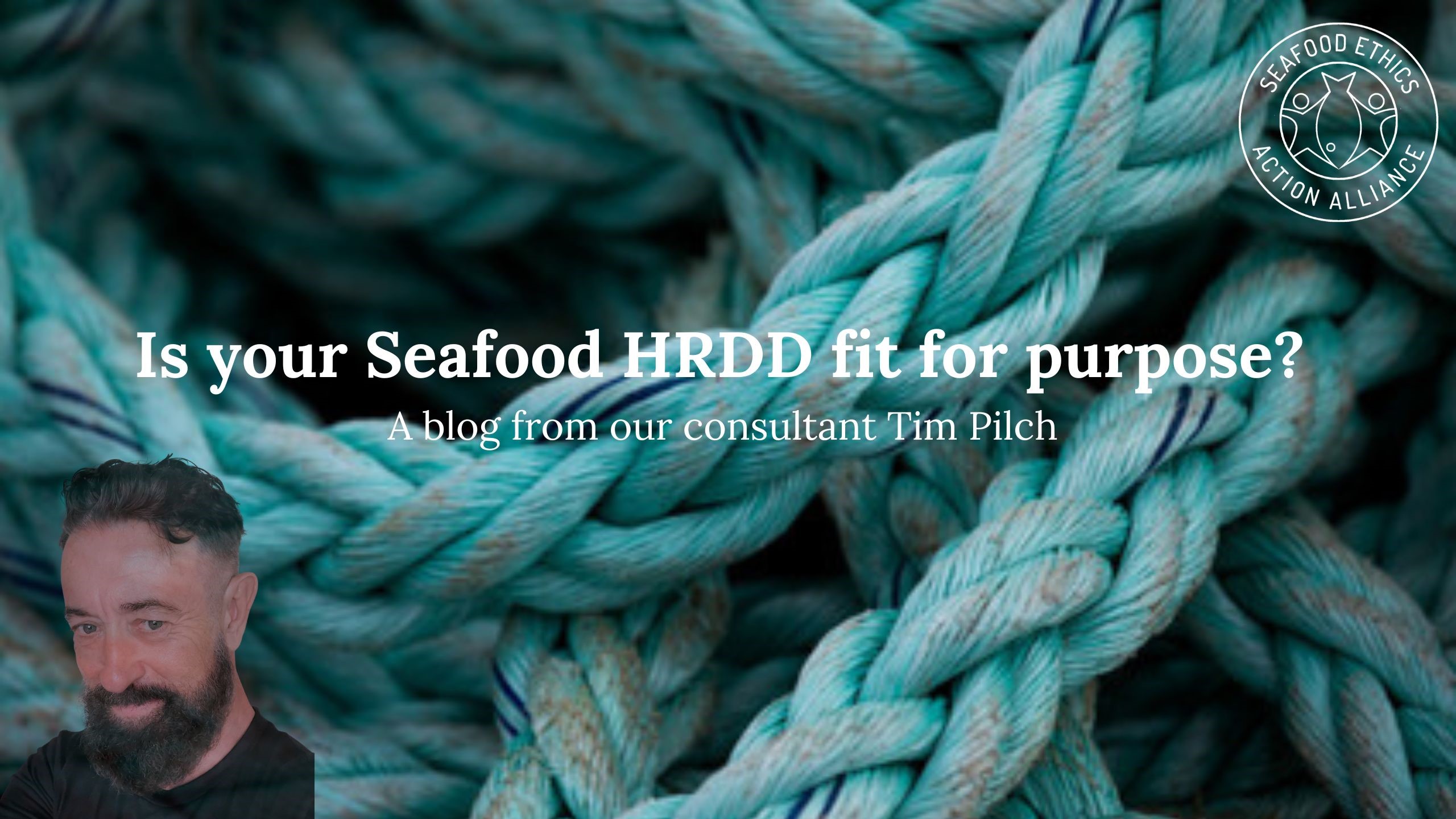Human Rights Due Diligence blog

If you aren’t doing things markedly different to how you did them four or five years ago then it’s very likely your Human Rights Due Diligence (HRDD) process is not robust, probably not fit for purpose!
Change is risky and you are in the risk management business, but have a good look at what you do and how you do it. Is change riskier than your current operational weaknesses?
Change is hard work, but planning change and undertaking it at your pace, is so much easier than doing it under pressure, when your due diligence is proven inadequate. It is also a lot more cost effective.
Don’t be daunted by HRDD guidance publications, they are public facing so need to be watertight and comprehensive. Pick out the areas that are most salient, and deliverable for your business. One size does not fit all, you may need to approach different supply chains, and risks, using different tools and techniques.
Consider the impact of your purchasing practices on suppliers’ ability to operate to required compliance standards. Internal engagement with functions that operate to potentially contradictory KPIs can be challenging, perhaps look to data and emerging PP tools to build an engagement strategy.
What might good HRDD look like?
Advocacy: Governments have a duty to protect human rights, if you don’t believe they are doing a good job let them know, and let the public know. As members of the SEA Alliance, you are probably contributing to ongoing advocacy efforts. Look to form or join other opportunities to apply pressure on situations you know are denying workers their rights.
Stakeholder Engagement: Understand how your business impacts supply chains and ensure internal functions and stakeholders are aware of their potential impact.
Networking: Externally with your supply chain partners, competitors, civil society, trade unions, activists, and relevant stakeholders local to suppliers. Just as importantly, network internally with business functions that can impact your suppliers.
You really need to keep in touch with emerging best practices, regional risks and build a ‘help and advice network’.
Visibility: It is obvious, but you can’t deliver due diligence unless you know exactly what you’re dealing with. Map your supply chains and secure them. If there is unauthorised subcontracting, or unknown sources along the supply chain, there are gaps in your due diligence.
Consider transparency, that’s publishing your supply chains in a sortable spreadsheet format, so stakeholders and civil society can access and make use of this information. You can then be the first port of call if there’s a need to leverage change, much better than reading about issues in the papers, and proof you are looking to engage with stakeholders and not hide your sourcing footprint and responsibilities.
Investigating Salient Risks: May differ from supplier to supplier due to many variants, location, product, worker demographic, etc. Again, one size due diligence may not fit all scenarios, so understanding the salient risks will allow you to tailor your approach.
Worker engagement should be the new major tool in identifying salient issues.
Social audits alone are not sufficient due diligence. There are areas of risk social audits can tackle, but these are few, and far less than they attempt to measure. I would consider reviewing the social audit protocol you employ, reduce the remit to investigate areas it can measure and allow auditors more time to be’ diligent’.
Engaging workers should start to become a major part of your HRDD.
Access to trade union representation and freedom of association should be an important workstream in all supply chains. But where not possible then direct engagement, via local NGO partnerships, or the use of scalable tech to monitor working and employment conditions, or to survey workers on salient issues.
For example, in the first SEA Alliance webinar Max Schmid (Environmental Justice Foundation) gave a presentation, in which he outlined the potential salient issues on fishing vessels – withheld wages and deductions, debt bondage and document retention, excessive overtime, abuse, intimidation and threats. Note, the data is collected from worker engagement, not audit. I would suggest all these risks are very challenging, probably unlikely, for an audit to identify and report.
The intimidation and threats, alongside all negative aspects of management behaviour, are seldom identified by social audit and yet in my opinion it is the biggest indicator that actors in the supply chain are not respecting workers, not delivering policies, and likely manipulating audit.
Delivering Remedy: must become as important as measuring risk. Without remedy the risk remains.
I know minor issues are the low hanging fruit, usually easiest to remedy and good for reporting purposes, but fixing the salient issues will dissolve the minor irritations. The lack of remedy that has followed audit, over decades, has significantly reduced its potency, alienated workers from engaging, and given false assurances regarding working conditions and worker welfare in the supply chain.”.
Engage other buyers (your competitors), in leveraging remedy, solicit local experts, trade unions present, and importantly workers in helping your supplier design remedy.
Workers’ satisfaction with remedy is paramount and they can report sustainability through the channels mentioned under the last heading.
For worker engagement to be sustainable they must be believed, safeguarded, and rewarded with remedy on the salient issues they highlight.
In closing: both the author and SEA Alliance would be really interested in your opinion on this blog, what you endorse, what you’d improve on, and what you simply disagree with. Please write your comments in an email to the author at margeryconsulting@outlook.com and please state whether you’d like to be named or remain anonymous, we will post every response received.
